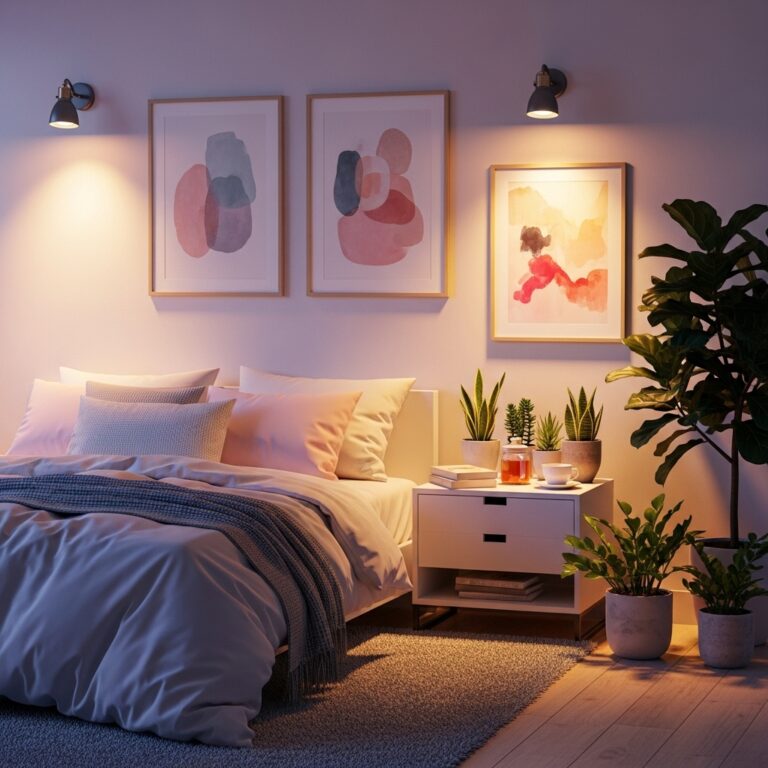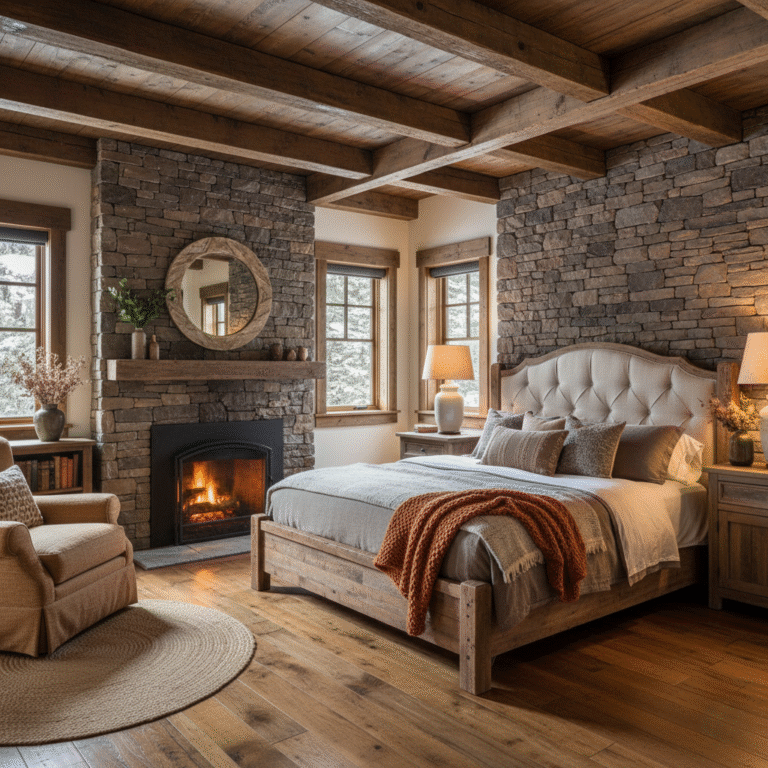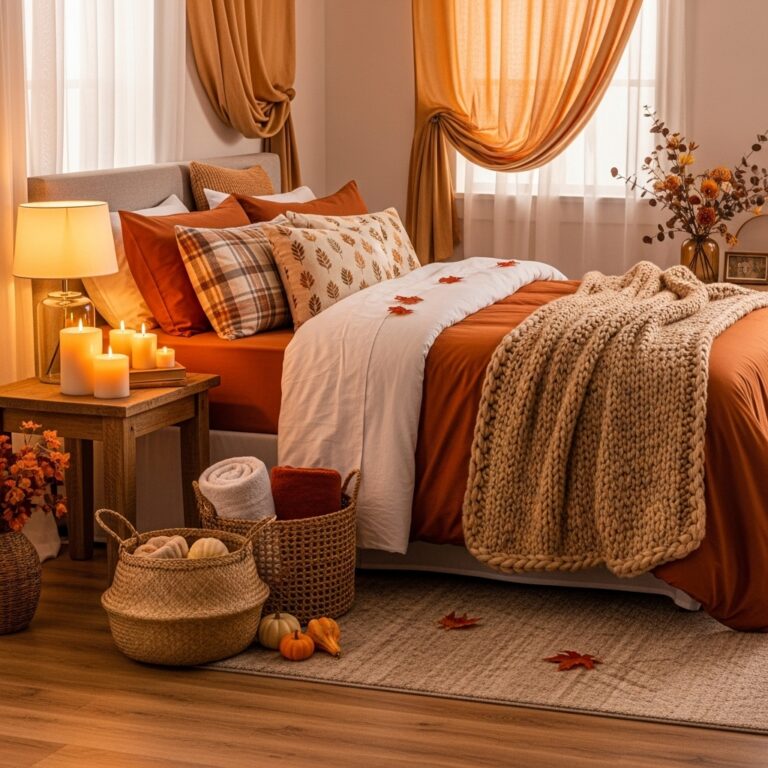Bedroom Inspirations: Unique Design Ideas and Expert Tips
A bedroom is more than just a place to sleep—it is a personal sanctuary that reflects one’s style and personality. Creating a space that feels both comfortable and inviting requires careful thought about layout, color, and decor. The key to bedroom inspiration is balancing comfort with style while adding personal touches that make the space truly unique.
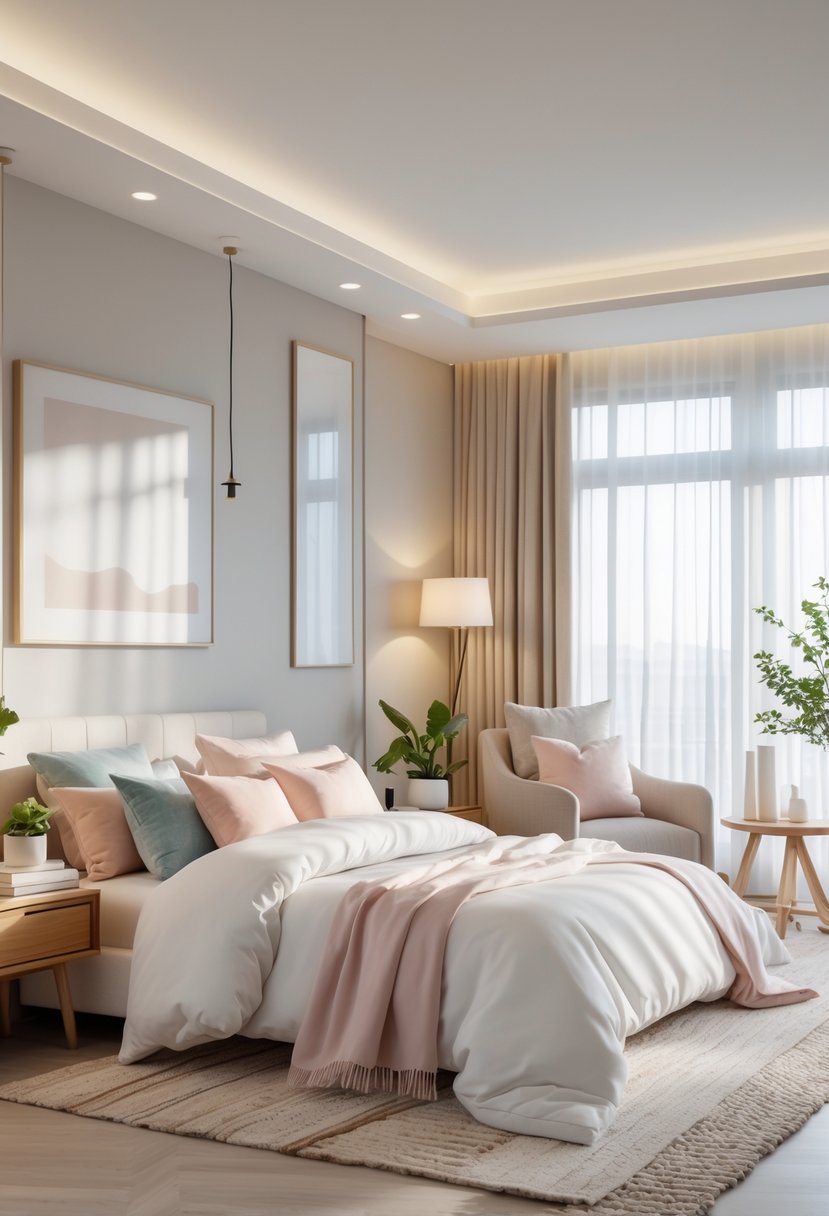
Many find that simple, timeless designs with neutral tones and natural textures create a calm and restful atmosphere. Adding small pops of color or meaningful decor helps bring character without overwhelming the room. Whether one prefers modern minimalism or cozy, layered aesthetics, there are ideas to suit every taste and budget.
Lighting and thoughtful furniture choices also play a big role in making a bedroom feel complete. Functional, well-placed lighting can enhance mood while practical furniture keeps the space uncluttered. With the right mix of elements, a bedroom can quickly become a favorite place in the home.
Key Takeways
- A bedroom should combine comfort with personal style.
- Neutral palettes and textures create a calming atmosphere.
- Functional lighting and furniture complete the space.
Bedroom Inspirations.
Core Elements of Inspiring Bedrooms
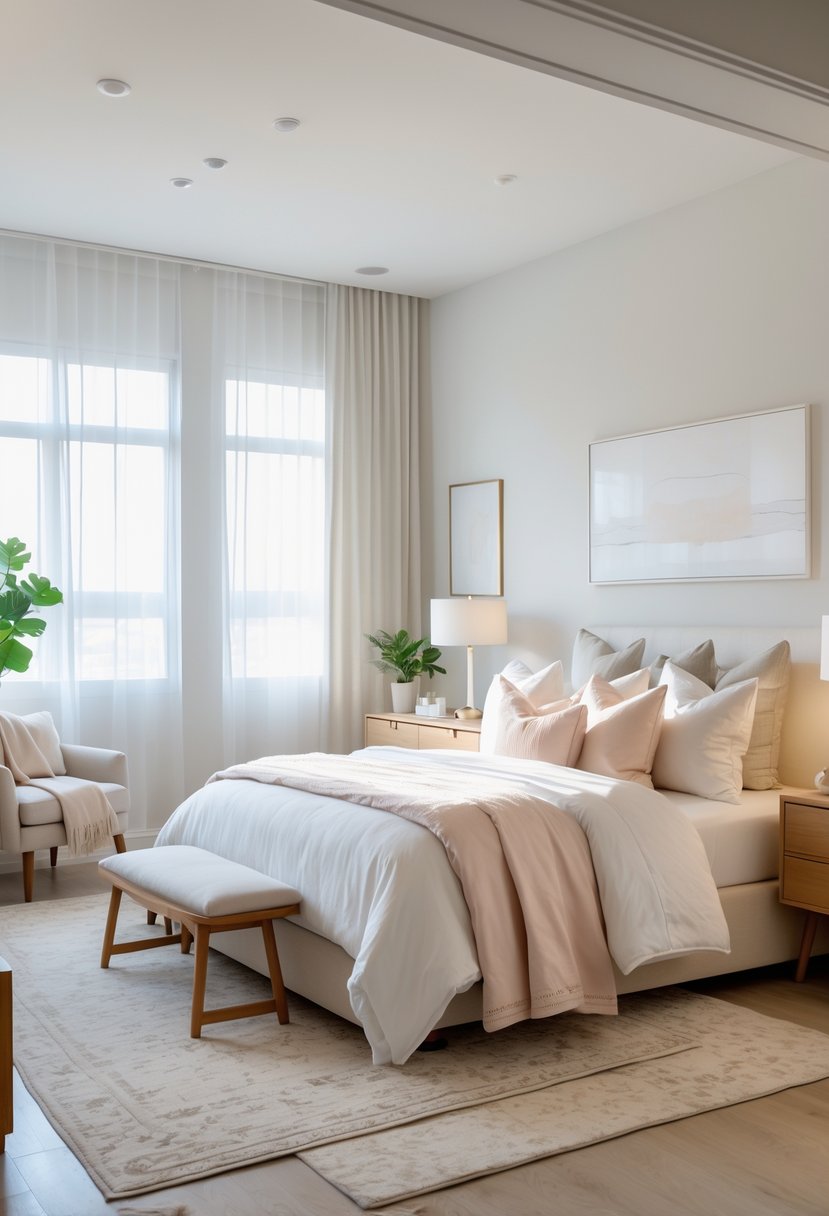
A well-designed bedroom blends function with style through key furniture choices and color decisions. Attention to the bed frame, headboard style, bedding color, and standout design elements shapes the room’s overall feel. These details help create a restful space that also reflects personal taste.
Choosing the Right Bed Frame
The bed frame anchors the bedroom and affects comfort and appearance. It should be sturdy, matching the room’s size and style without overwhelming the space. Wood frames bring warmth and a classic feel, while metal frames add an industrial or modern edge.
Consider the bed height, too. A higher frame offers under-bed storage, maximizing small rooms. Platform beds eliminate the need for a box spring, creating a sleek, low-profile look. When selecting, check for quality materials and construction to ensure long-term durability.
Selecting Headboards With Impact
Headboards frame the bed and set the bedroom’s tone. Upholstered headboards add softness and comfort, inviting relaxation. Wooden headboards suggest natural warmth and suit styles like farmhouse or rustic.
A headboard’s size matters. Taller headboards make the bed a focal point, while low-profile ones keep rooms feeling open. Design elements such as tufting, nailhead trim, or carved details can enhance visual interest without cluttering the space. The right headboard balances style with bedroom scale and user needs.
The Role of White Bedding
White bedding is a versatile choice that promotes cleanliness and calmness. It brightens the room and complements nearly any décor style. The simplicity of white sheets and covers allows other design elements, like colorful pillows or existing furniture, to stand out.
White bedding is also easy to refresh and wash. It reflects light, making small or dark rooms feel more open. To avoid a sterile look, mix textures like crisp cotton with soft linens or add subtle patterns through stitching. White bedding creates a timeless foundation for bedroom design.
Creating a Statement Headboard
A statement headboard acts as a centerpiece that defines the entire bedroom. This can be achieved with bold colors, dramatic shapes, or unique materials. For example, an oversized headboard in velvet or leather immediately attracts attention and adds luxury.
Designers also use patterned wallpaper behind the headboard or experiment with mixed materials like wood and metal for a layered effect. Statement headboards provide personality and can make a simple room feel curated and stylish without needing excessive décor. It is essential, however, to keep other elements balanced to avoid visual overload.
Bedroom Inspirations Bedroom Design Styles for Every Taste
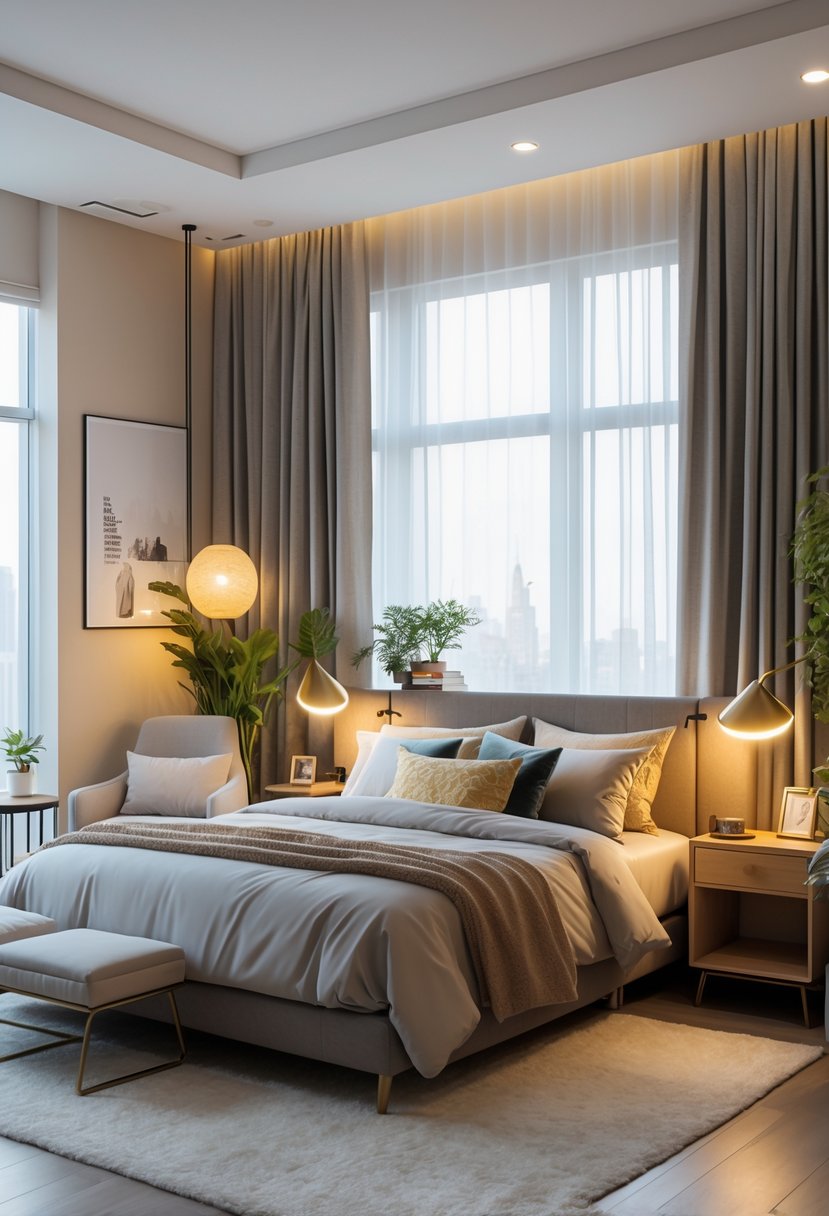
Bedroom design offers many ways to create a space that fits unique preferences. Some rooms focus on clean lines and simplicity, while others celebrate history or mix different styles. Key choices include furniture, color, and accents that set the tone and mood.
Modern Bedroom Inspirations
Modern bedrooms highlight simplicity and function. They often use neutral or bold color walls, such as white, gray, or deep hues, to create a fresh look. Furniture tends to have clean lines with low-profile beds and minimal decoration. Lighting plays a key role, with sleek lamps or pendant lights adding both style and purpose.
Texture is balanced with smooth surfaces like glass, metal, and polished wood. Accessories are kept simple but can include abstract artwork or neon accents for a pop of color. The goal is to build a calm, uncluttered environment focused on comfort and atmosphere.
Vintage Design Influences
Vintage design brings charm by mixing pieces and patterns from the past. Furniture often includes antique or retro items with classic shapes, like carved wood beds or ornate dressers. Colors can range from soft pastels to rich jewel tones, adding warmth and history.
Decor elements include floral fabrics, lace, and vintage lighting like chandeliers or lampshades. Combining these styles creates a cozy and nostalgic bedroom. Vintage design often calls for layering textures and patterns thoughtfully to maintain balance and avoid clutter.
Eclectic and Contemporary Approaches
Eclectic bedrooms mix various styles, colors, and eras to create unique, personalized spaces. They bring together midcentury furniture, boho textiles, and glam accessories. A clear color palette helps unify different elements, such as navy or earth tones.
Contemporary design overlaps with eclectic but leans toward clean shapes and comfort. It blends modern furniture with classic touches, like sculptural decor or traditional wood pieces. The key is balance—blending bold and subtle elements for visual interest without chaos.
Color and Texture to Transform Your Space
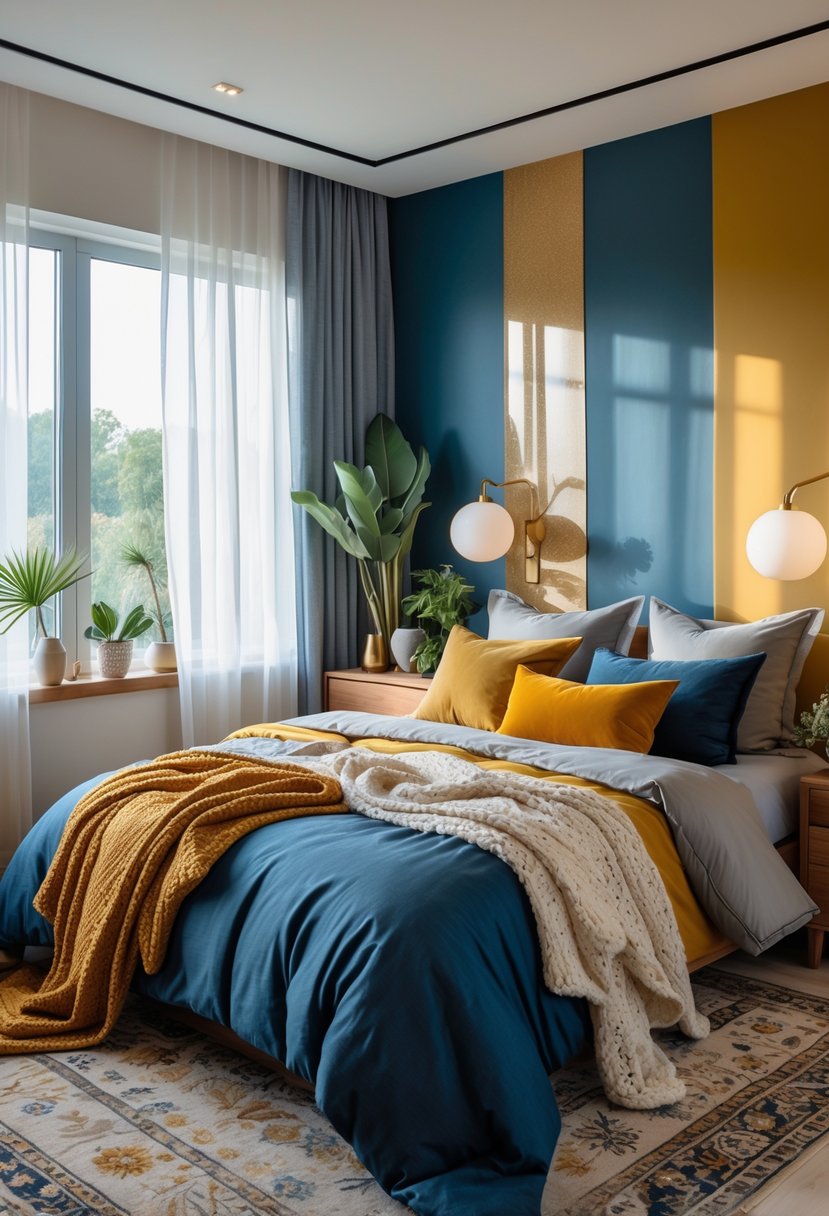
Choosing the right colors and textures can change how a bedroom feels and looks. Rich tones and soft materials add depth, while natural elements bring warmth and comfort. Balancing these features helps make the space both attractive and inviting.
Incorporating Dark Green Bedding
Dark green bedding adds richness and a touch of nature to a bedroom. It pairs well with neutral wall colors like beige, soft gray, or white to keep the room balanced and fresh.
Using dark green with natural wood furniture or metal accents creates a sophisticated look. Deep green tones work best with linen or velvet fabrics, which add texture and luxury.
Mixing lighter linens or throw pillows in cream or gold hues can brighten the bedding arrangement and prevent the space from feeling too dark or heavy.
Calming Bedroom Palettes
Calming color schemes often include soft neutrals like beige, pale gray, and white. These shades create a peaceful, clean backdrop that suits most bedroom styles.
Adding muted pastels such as blush pink or light blue can bring gentle color without overwhelming the senses. These palettes encourage relaxation and rest.
Careful use of two-tone walls or subtle accent colors helps add interest without disrupting the tranquil feel. Coordinating furniture and decor should also support the restful mood.
Using Natural Materials and Textures
Natural materials like wood, rattan, linen, and cotton improve bedroom comfort and style. They introduce organic textures that contrast with smooth surfaces, making the room feel layered and cozy.
Wood furniture with visible grain and woven rugs add tactile interest. Linen bedding brings softness and breathability, enhancing sleep quality.
Using natural textures alongside calm colors makes the space inviting and grounded. It also supports sustainable design choices and pairs well with earthy or green tones in decor.
Decorative Features and Personal Touches
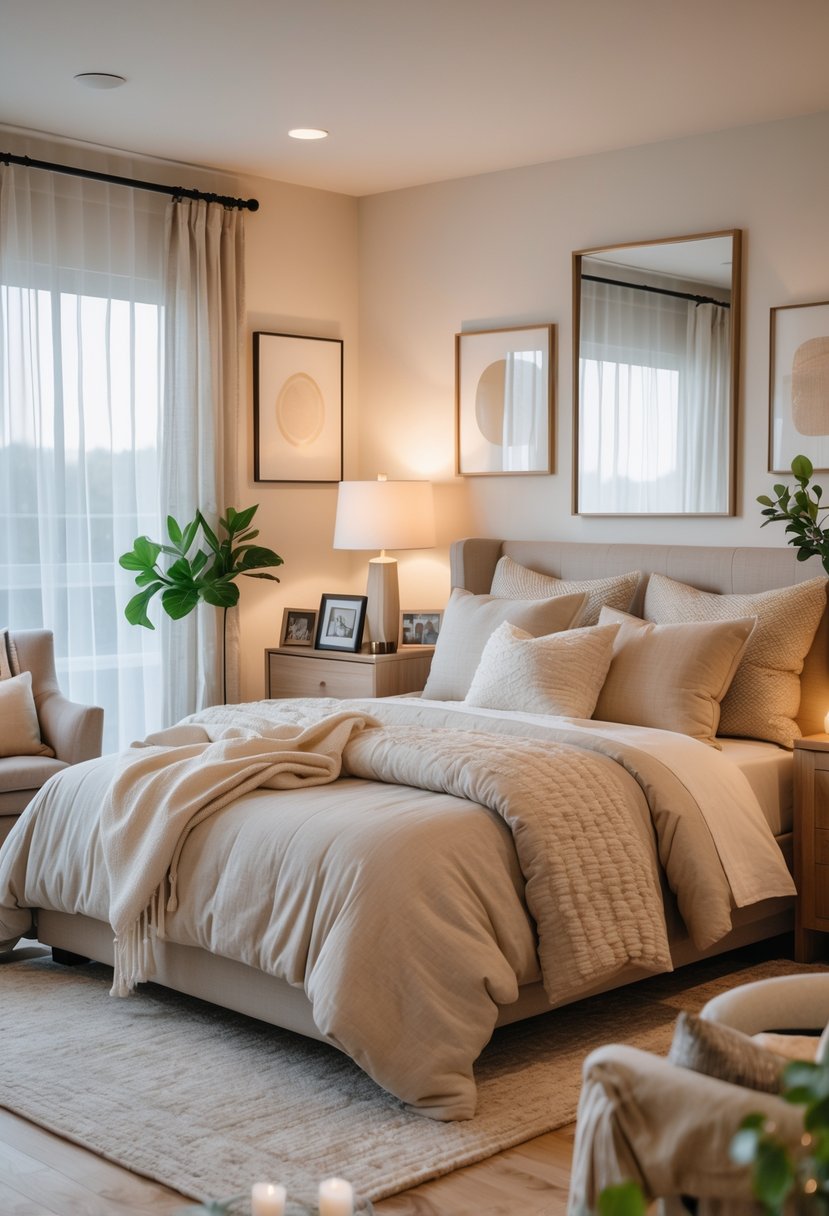
A bedroom feels more inviting and unique when it includes decorative elements that reflect personality and style. Small details like wall art, wallpaper, or curtains can transform the atmosphere. Using distinctive decor choices helps create a space that is both functional and visually appealing.
Creative Wall Decor Ideas
Wall decor offers many ways to personalize a bedroom. Framed photos or art prints can create a gallery wall that tells a story or showcases interests. Floating shelves provide a platform for small plants, books, or collectibles.
Mirrors are also practical decorative pieces. They reflect light and make the room feel larger. Adding textured wall hangings like macramé or woven panels introduces warmth and depth.
For renters, removable wall decals or framed panels of wallpaper allow easy updates without damage. Grouping objects by color or theme maintains a cohesive and balanced look.
Styling With Statement Wallpaper
Statement wallpaper creates an instant focal point in the bedroom. Bold patterns or bright colors behind the bed draw the eye and add personality. Geometric or floral designs bring energy, while textured wallpaper adds subtle dimension.
When choosing wallpaper, consider the overall color scheme. A large-scale pattern works well on one accent wall to avoid overwhelming the space. Ceilings also offer opportunity for wallpaper, bringing unexpected detail above.
For a less permanent option, framed wallpaper panels or peel-and-stick types can be used. These add pattern without full commitment, making it easier to change styles later.
Enhancing Spaces With Curtains
Curtains impact both style and function in a bedroom. Layering different types, such as sheer and blackout curtains, gives better light control and privacy. Color and texture can complement bedding or wall colors, tying the room together.
Bold curtains introduce color or pattern, while neutral tones add softness. Floor-length curtains create height, especially in rooms with low ceilings. Tie-back styles offer a classic touch and make windows look bigger.
Using the same fabric for window curtains and bed canopy or drapes around the bed can create a cohesive, polished feel. This also adds warmth and coziness to the room.
Tips for Unique Bedroom Decor
Unique bedroom decor often comes from mixing styles and personal items. Thrifted pieces like painted dressers or lampshades offer affordable, custom looks. Combining vintage with modern elements adds balance and character.
Plants placed near the bed or by windows bring freshness and natural texture. Small desks or vanity areas add function without cluttering.
Using mismatched nightstands or layering rugs with different patterns can add interest while staying coordinated by color. Lighting options like pendant lights or colorful lamps provide both style and atmosphere.
Simple updates like colorful bedside lamps or artistic headboards instantly make a bedroom feel one of a kind.
Lighting and Ambiance Enhancements
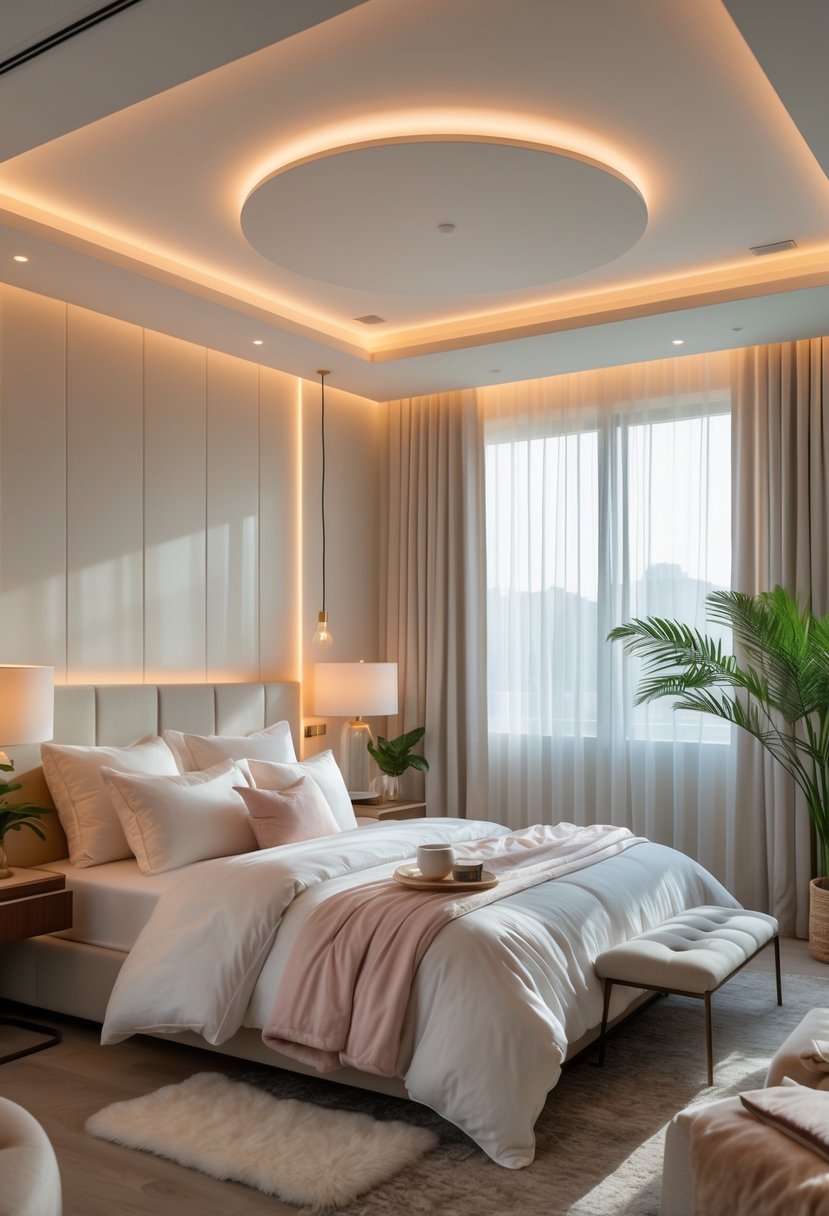
Lighting shapes the mood and function of a bedroom. Thoughtful choices in fixtures, layering, and placement create a balanced and inviting space. The right light can emphasize design elements and support activities like reading or relaxing.
Pendant Light Inspirations
Pendant lights serve as both functional sources and decorative features. Hanging one or two over bedside tables can free up nightstand space while adding visual interest. The height should be adjusted to avoid glare and provide soft illumination.
Modern pendants often feature sleek metal or glass shades, but natural materials like woven fibers also add texture. Using a statement pendant with unique shapes or finishes can anchor the room. Opting for dimmable pendants allows control over brightness, making them versatile for different moods.
A well-chosen pendant can draw the eye upward, accentuating ceiling details or adding drama without overwhelming the room.
Layering Different Light Sources
Effective bedroom lighting combines multiple types of fixtures. Ambient lights provide overall illumination. Task lights, such as sconces or reading lamps, support focused activities. Accent lights highlight art or architectural features.
Using dimmers on all layers gives control over brightness throughout the day. Floor lamps can add warmth and fill darker corners. Table lamps offer personal lighting and decor accents. The balance between layers avoids harsh shadows and bright spots, creating a comfortable environment.
Choosing fixtures with complementary styles and finishes ties the lighting design together.
Romantic Canopy Bed Lighting
Lighting near a canopy bed enhances its dramatic and cozy feel. Soft, warm light around the frame can create a gentle glow that outlines the structure. String lights or small wall sconces work well to softly illuminate the space without harshness.
Integrated lights inside the canopy provide subtle highlights that maintain intimacy. Avoid overhead lights that create sharp shadows or disrupt the canopy’s airiness. Adjustable lamps or sconces allow for reading or relaxing without disturbing a partner.
Using warm white bulbs maintains a soothing atmosphere fit for rest and romance.
Inspiring Bedroom Details and Layouts
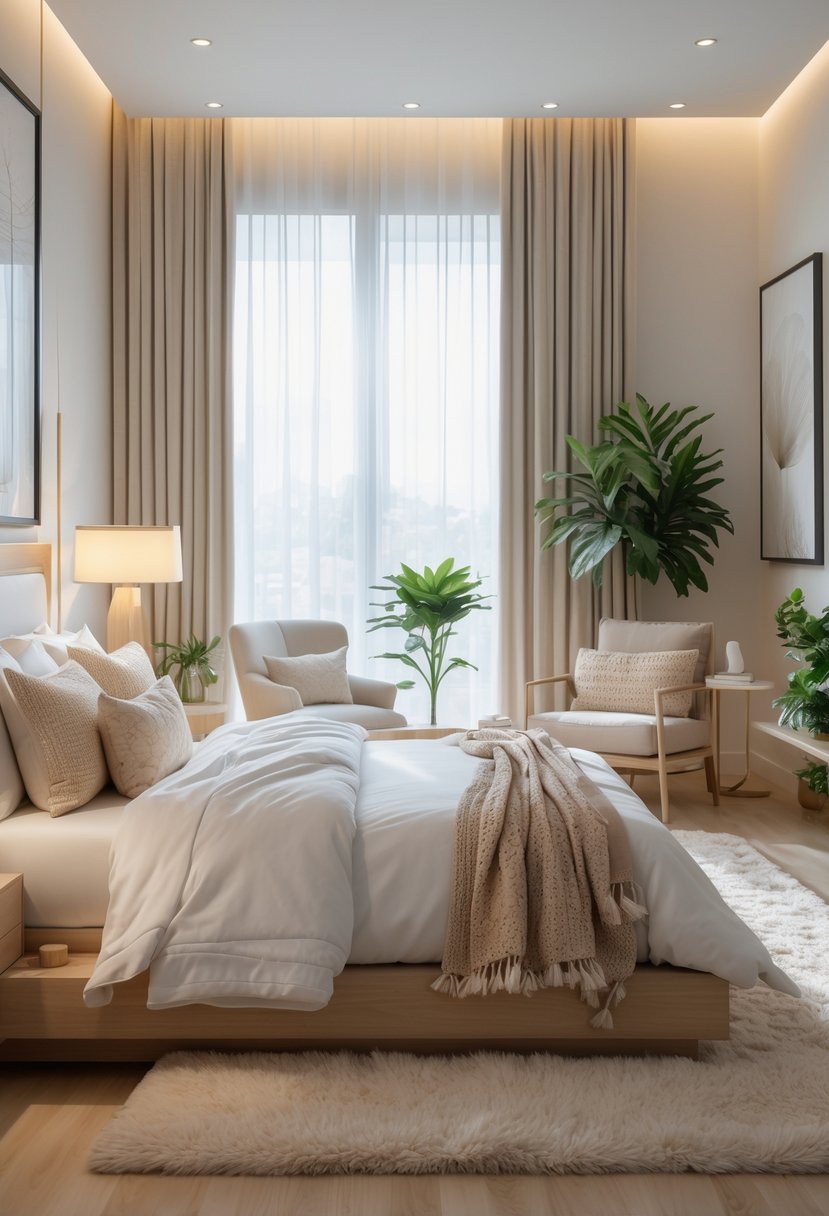
Creating a stylish and functional bedroom often comes down to thoughtful details and smart layouts. Small changes, like adding a window seat or using clever furniture arrangements, can transform the room’s feel and usability. Designers often focus on making every inch count while keeping comfort and style in balance.
Designing a Cozy Window Seat
A window seat adds charm and function to a bedroom by offering a quiet place to relax or read. Designers like Emily Henderson emphasize choosing comfortable cushions and soft throws to make the seat inviting. Built-in storage under the bench can save space and help keep the room tidy.
Positioning the window seat where natural light floods in enhances the cozy atmosphere. Using neutral colors or soft patterns keeps the area calm and visually appealing. Adding small side tables or shelves nearby creates a useful nook without cluttering the space.
Maximizing Small Bedroom Layouts
Small bedrooms benefit from layouts that prioritize flow and storage. Michelle Boudreau often suggests multi-functional furniture, like beds with drawers or wall-mounted desks, to save floor space. Placing larger pieces against the walls keeps the center open, making the room feel bigger.
Using vertical storage, such as tall shelves or hooks, adds extra space for belongings without crowding the floor. Light colors and mirrors can boost the sense of openness. These strategies make small bedrooms comfortable without sacrificing style or practicality.
Expert Influences and Designer Insights
Experts like Emily Henderson and Michelle Boudreau focus on balance between aesthetics and function. They recommend layering textures and mixing high- and low-end pieces to create rooms that feel both polished and lived-in.
Designers advise selecting a focal point, such as a statement bed or unique wall decor, to anchor the room visually. Lighting choices also matter: combining overhead fixtures with task lights offers flexibility for different activities. Their insight shows how careful planning creates timeless and personal bedroom spaces.
Frequently Asked Questions
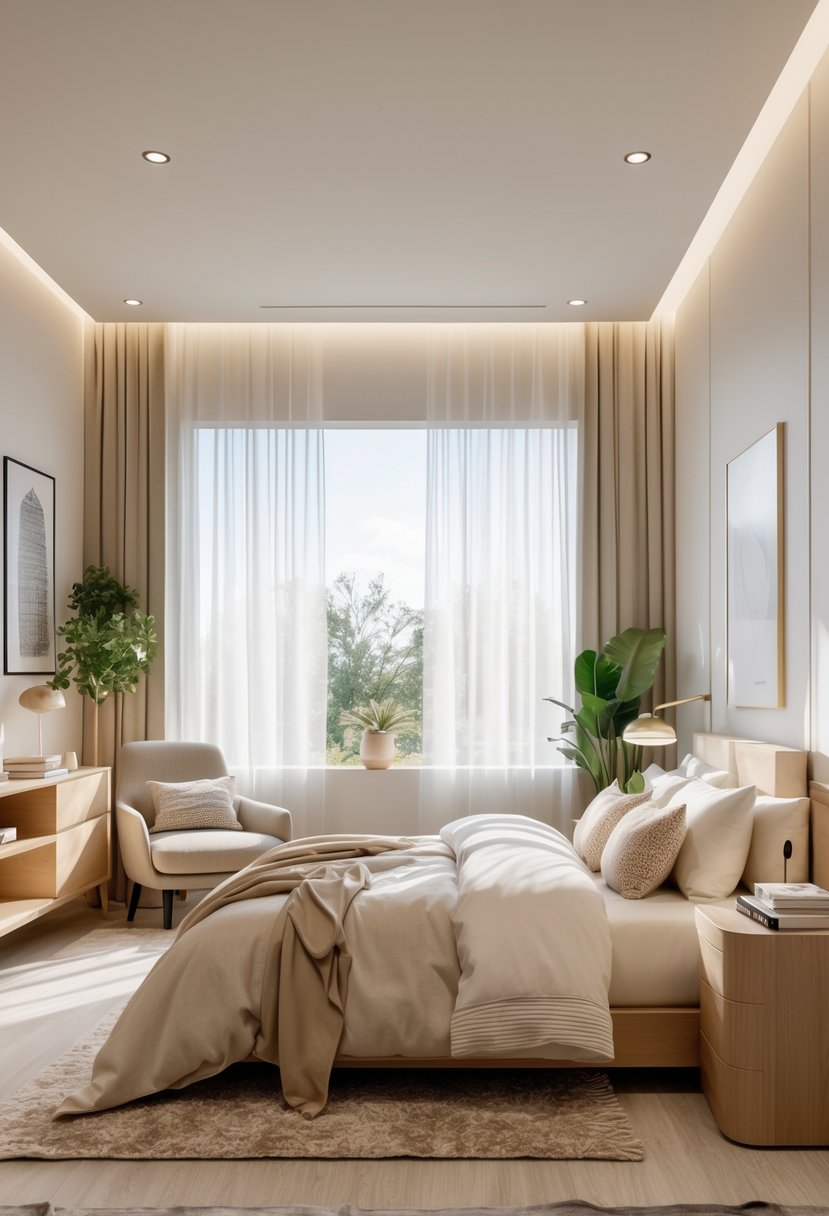
Many people want to know how to update master bedroom decor, use space well in small rooms, and personalize shared bedrooms. Others look for simple, elegant themes and advice on picking furniture that fits both style and function. Finding sources for modern bedroom ideas is also a common concern.
What are the latest trends in master bedroom decor?
Current trends favor calming color palettes like soft greens, warm browns, and muted neutrals. Layered textiles such as quilts and throws add texture and warmth. Ambient lighting with lamps and sconces replaces harsh overhead lights to create a cozy atmosphere.
Natural materials and sustainable choices are popular. Minimal clutter and clean lines help maintain a restful retreat. A mix of classic and modern styles often appears to balance comfort and elegance.
How can I decorate a small bedroom to maximize space?
Using multi-functional furniture is key, such as beds with storage drawers underneath or fold-out desks. Light colors on walls and minimal patterns make the room feel larger. Mirrors placed opposite windows increase natural light and create an illusion of space.
Keeping the layout simple and open prevents crowding. Floating shelves save floor space and add storage. Avoiding oversized furniture helps maintain flow and usability.
What are some creative ideas for decorating a bedroom for couples?
Couples can balance shared and individual tastes by combining neutral base colors with accent pieces that reflect personal styles. Dual nightstands and layered bedding that mixes patterns with solids create harmony.
Incorporating shared hobbies or memories through photos, art, or decor enhances connection. Adjustable lighting allows each partner to control their personal space.
Can you suggest simple yet elegant bedroom decorating themes?
Themes like minimalist, rustic, or modern farmhouse work well for simplicity and elegance. Neutral colors and natural wood finishes form a calm base. Adding texture with soft rugs, cozy bedding, and subtle decor keeps the room inviting.
Focus on functional furniture with clean lines. Avoid excess decoration to maintain a tidy and peaceful look.
How do I choose the right bedroom furniture to enhance my room’s aesthetics?
Furniture should fit the room’s size and style. For small rooms, opt for pieces that serve more than one purpose, like storage beds or compact dressers. For larger spaces, statement beds or accent chairs add character.
Material and color choices should complement the wall colors and textiles. Prioritize quality and comfort alongside design to ensure furniture lasts and feels good.
Where can I find inspiration for modern bedroom designs?
Design websites, social media platforms like Pinterest and Instagram, and home decor blogs are good sources. Professional designers also share tips and portfolios online.
Visiting showrooms or browsing catalogues can help visualize styles. Combining multiple ideas leads to a personalized and current bedroom design.

